Vietnamese Mille-Feuille Nabe is my Vietnamese take on the traditional Japanese Mille-Feuille Nabe, also known as Japanese thousand layer hot pot! This cozy dish features napa cabbage leaves delicately layered with thin slices of pork belly, all simmered in a rich homemade pork broth. It's packaged with vegetables and protein and is a comforting dish for family and friends!
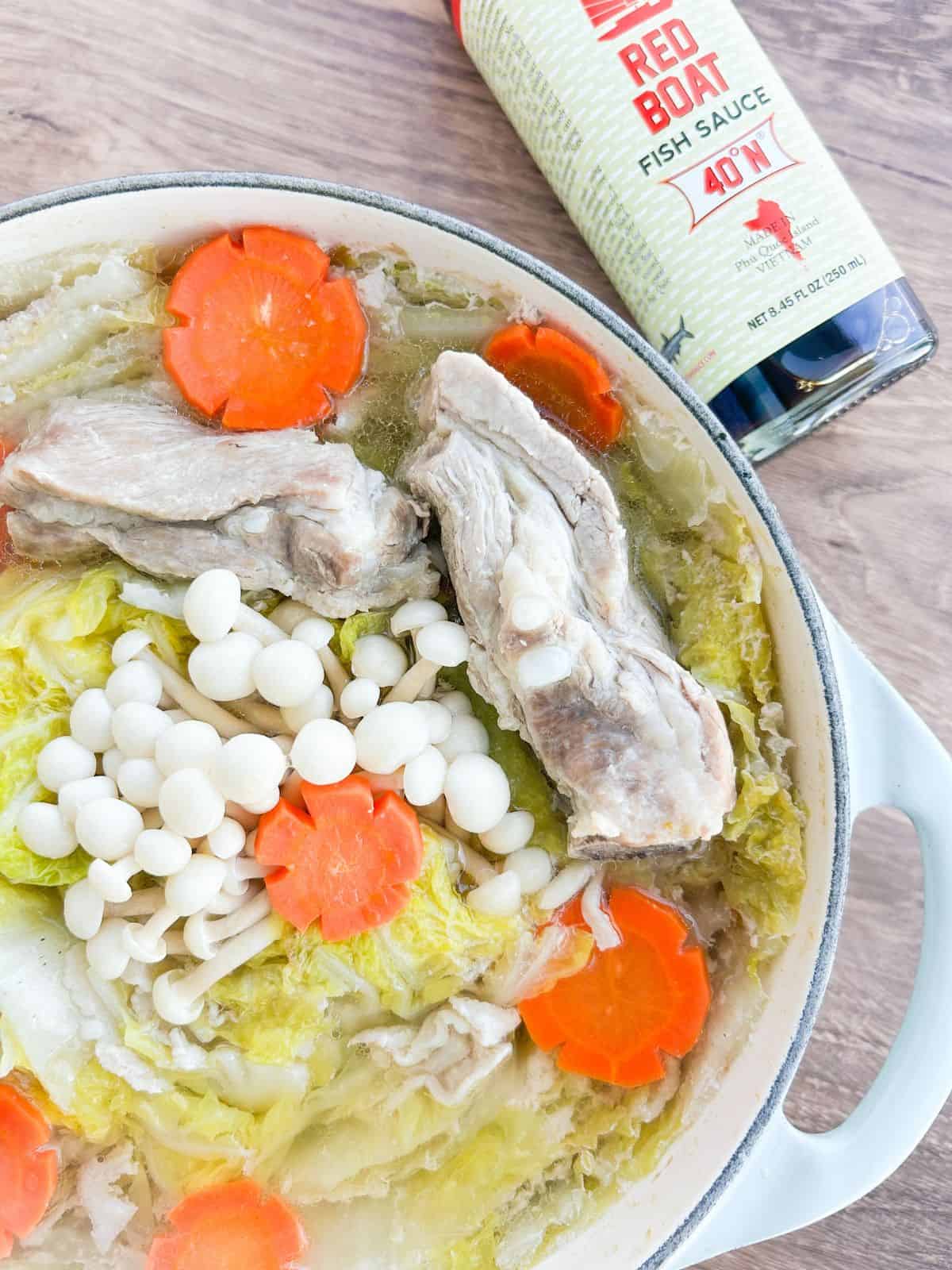
What is mille-feuille nabe?
Mille-feuille nabe, not to be confused for the french pastry dessert mille-feuille known as Napoleon, is a popular Japanese hot pot made with a dashi broth containing cabbage and pork belly.
Mille feuille here refers to the "thousand layers" of cabbage and pork belly while nabe or nabemono is the term for a Japanese hot pot dish itself.
While mille feuille nabe is traditionally made using a dashi broth, I took inspiration from the classic Vietnamese dish Súp nui sườn and made a homemade pork broth, seasoned with fish sauce.
Both broths are equally as delicious and comforting but if you aren't in the mood to make your own broth, feel free to skip to Step 4. Alternatively, if you're looking for a classic tasting mille-feuille nabe, start at Step 4 and add your dashi broth in Step 8, in place of the pork broth.
Jump to:
Ingredients
- Napa Cabbage: It is essential to use napa cabbage here for those quintessential layers in Vietnamese mille-feuille nabe!
- Daikon Radish: The radish infuses a slight sweet flavor into the broth!
- Pork Spareribs: Also used for the broth, but you can enjoy them with the mille-feuille nabe afterwards.
- Carrots: Some carrots are used for the broth and some are added to the mille-feuille hot pot for presentation.
- Sliced Pork Belly: Thinly sliced pork belly is layered between the cabbage for a savory, hearty meal.
- Red Boat Fish Sauce: Fish sauce lends a savory, umami flavor to the broth!
- Salt: Add a bit of salt to taste to the broth for added flavor.
- Water: You will just need water here, since we are making the broth on our own.
- Beech Mushroom: If desired, you can cook the nabe with beech mushrooms, too!
See recipe card for quantities.
How to Make Vietnamese Mille-Feuille Nabe
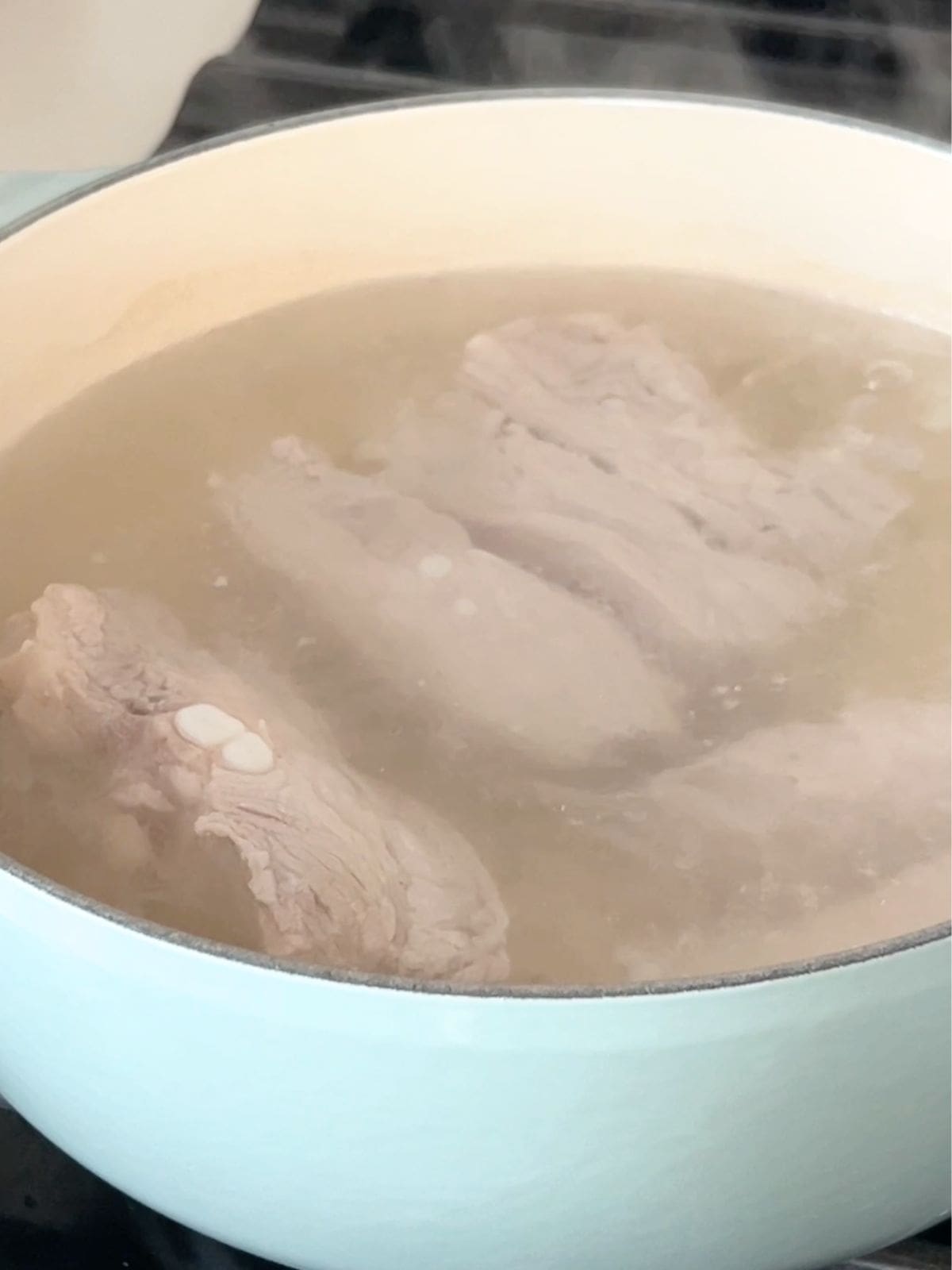
Step 1: To make the broth, begin by bringing a large pot of water to a boil. Add in the pork spareribs and parboil for 5-10 minutes. Drain and rinse under cold water.
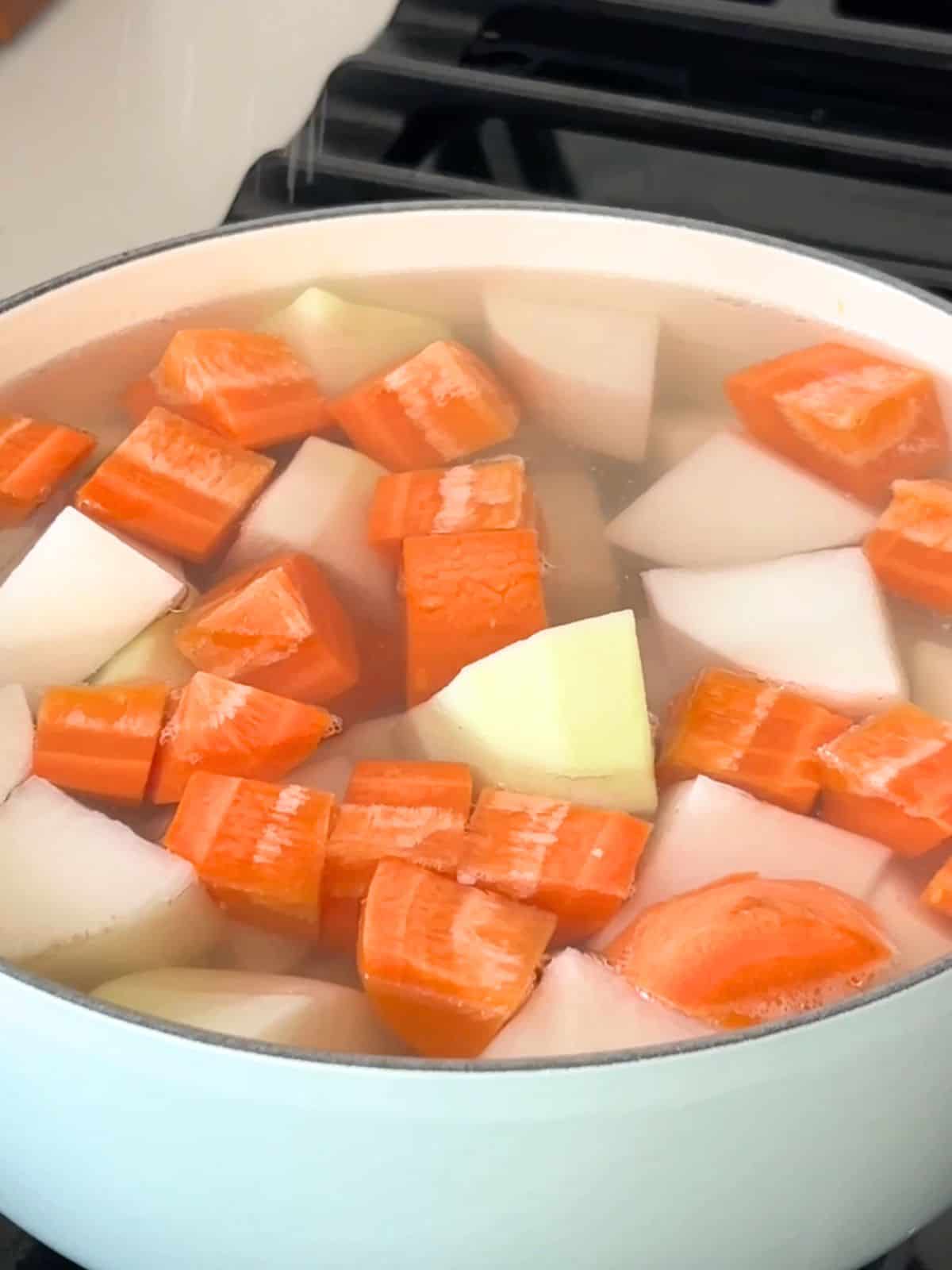
Step 2: To the large pot, add 7 cups of water, the parboiled spareribs, daikon radish, and 7oz of carrots, quartered into 2-inch pieces. Add 1 teaspoon of salt, bring to a boil and reduce to a simmer and cover for 45 minutes or until pork is tender. Add more water as needed.
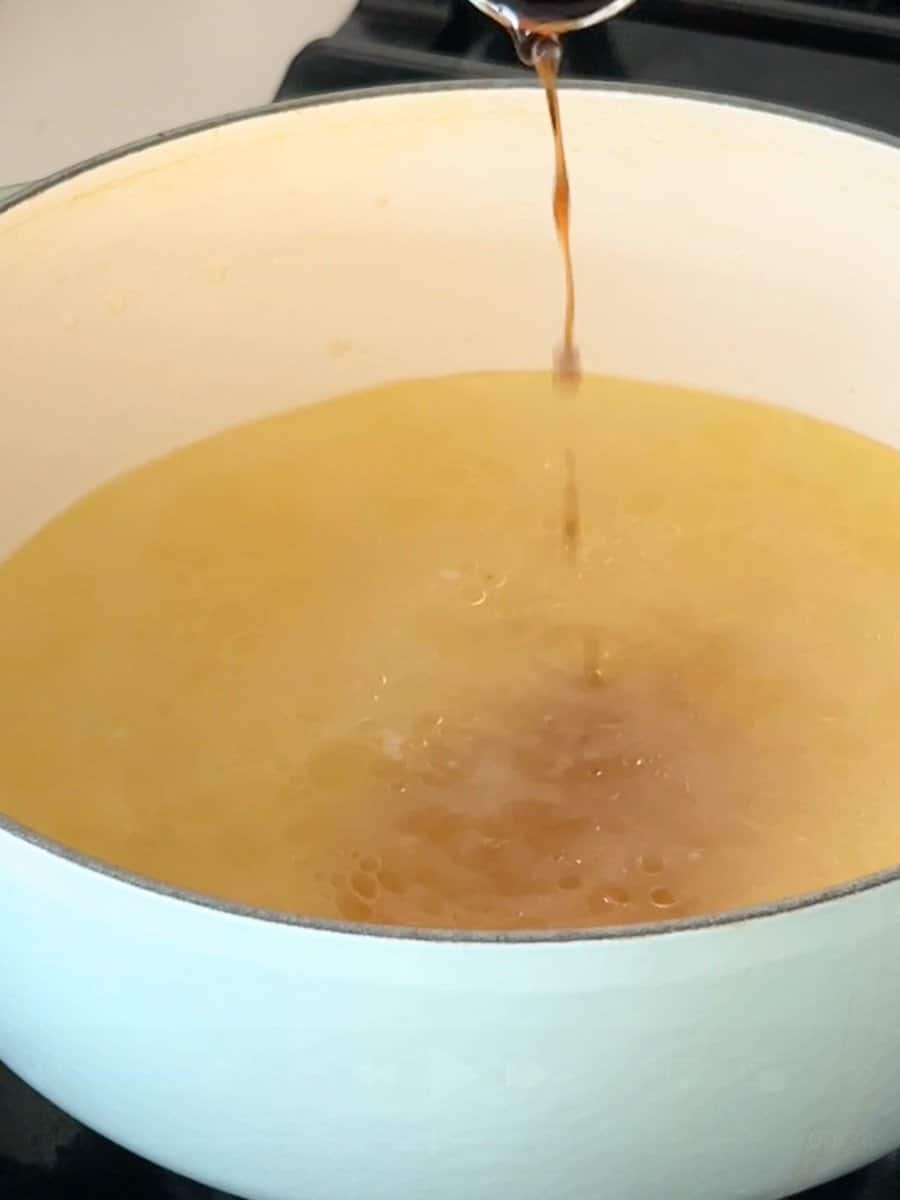
Step 3: Remove daikon radish and carrots and discard. Remove pork ribs and set aside. Strain broth through a cheesecloth to help remove any excess fat or other impurities. Add broth back into the pot and add Red Boat Fish Sauce, to taste. Remove from the pot and set aside.
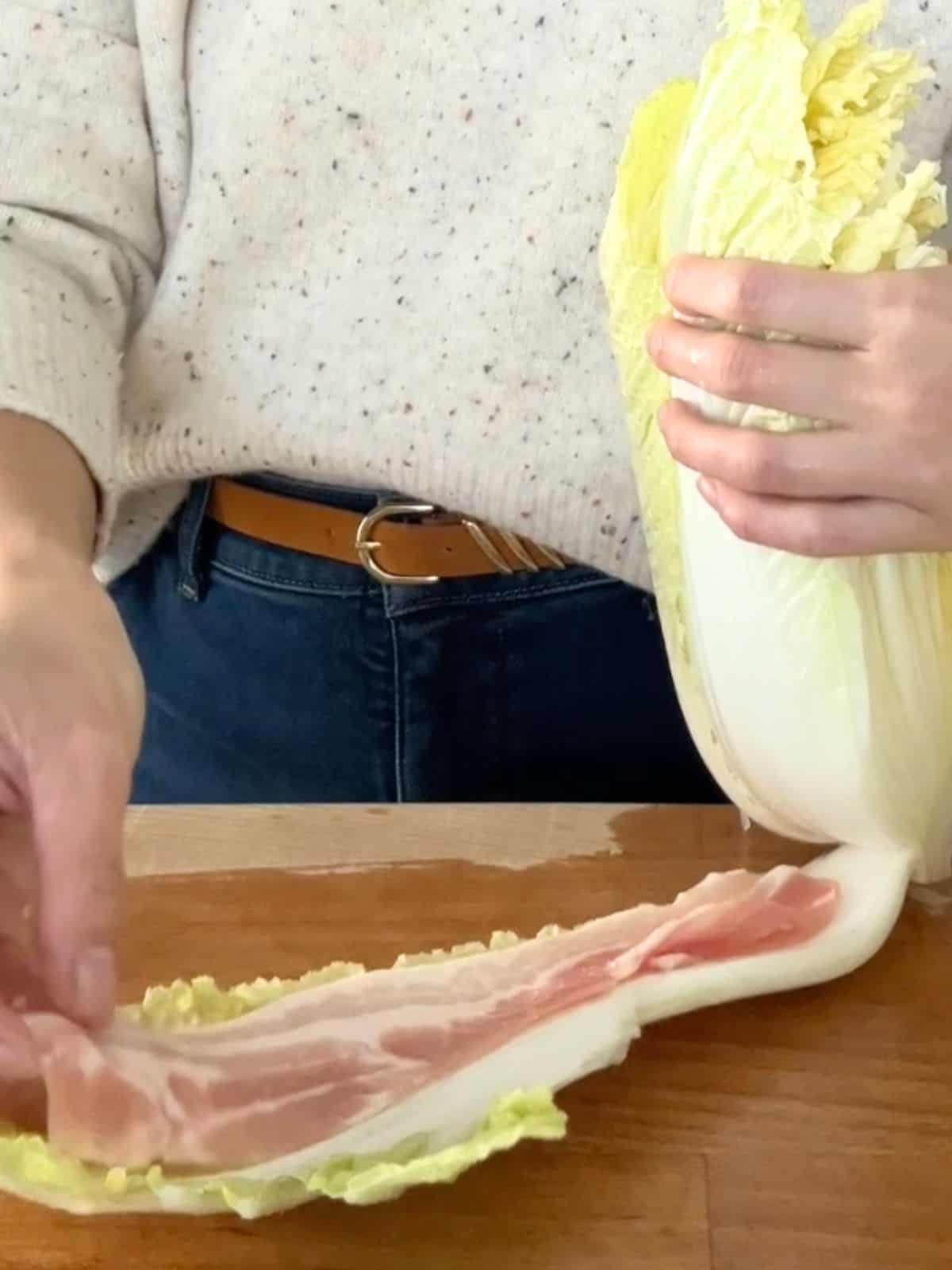
Step 4: Wash your quartered napa cabbage, making sure to clean in between each layer. Layer the pork belly slices onto the napa cabbage by placing one slice between each of the leaves. Repeat with the remaining pork belly. Cut the smaller leaves towards the center of the napa cabbage and set aside.
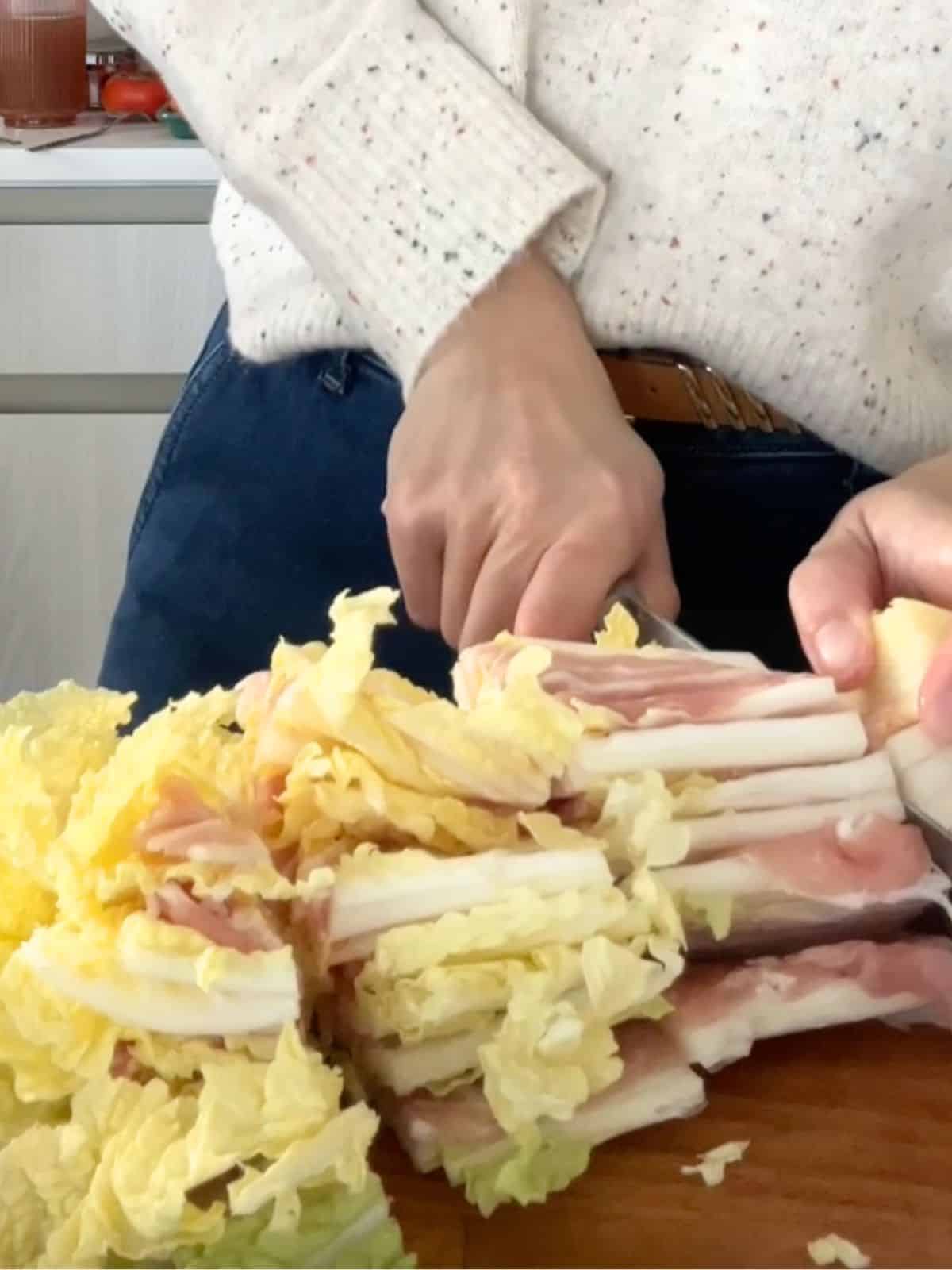
Step 5: Cut the hard core of the napa cabbage off and discard. Cut the rest of the napa cabbage into slices that are about 2 inches long.
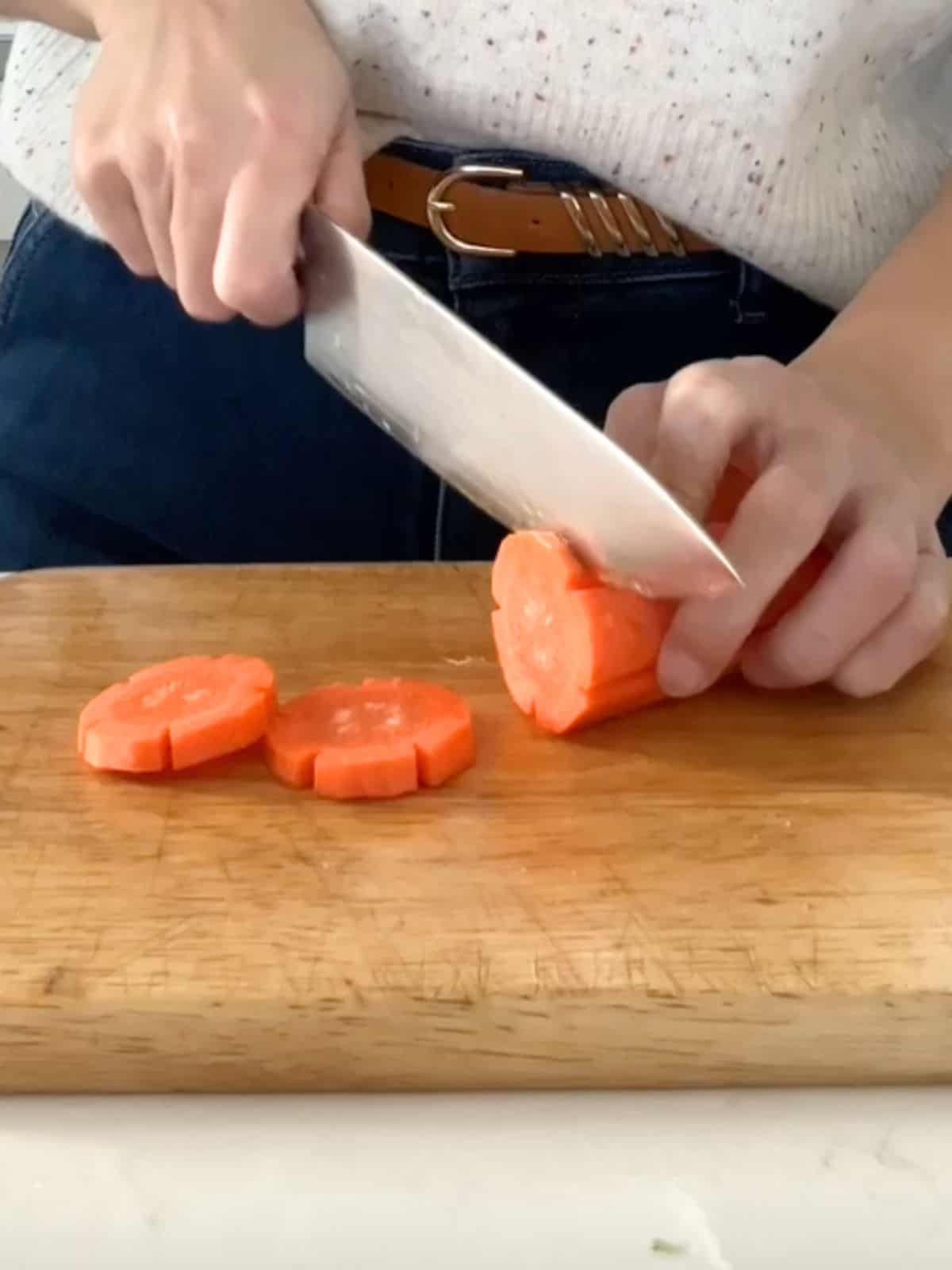
Step 6: Optional step: carve the remaining 3oz of carrots into a flower, by cutting 5 equidistant slivers, lengthwise, out of the carrot and then into thin slices. Alternatively, you can cut the carrot into thin slices without carving out the slivers.
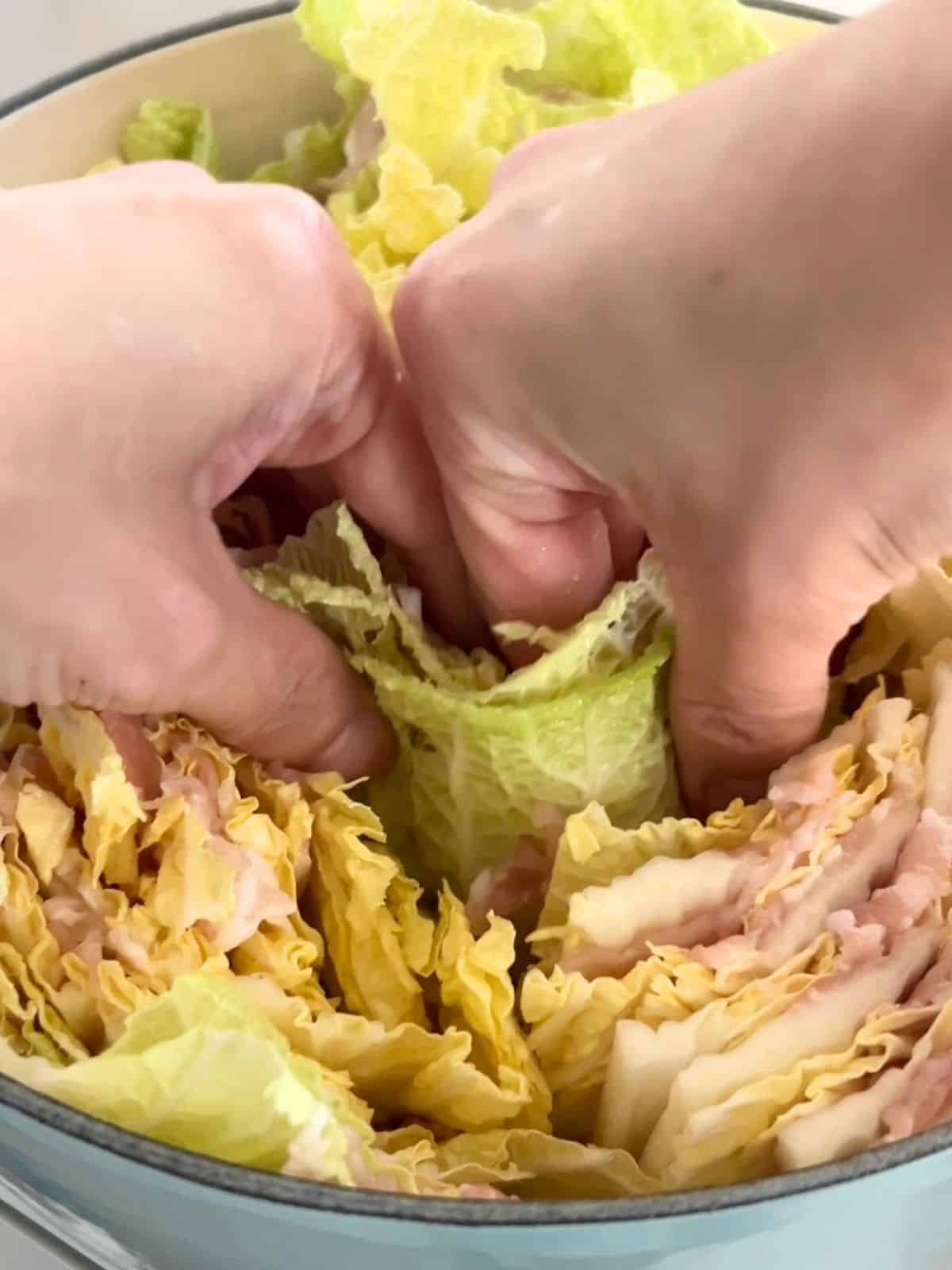
Step 7: Begin packing a large pot (about 4.5QT) with the sliced layers of napa cabbage. Pack the cabbage tightly around the pot until you reach the center. Place the smaller napa cabbage leaves in the center, along with any mushrooms you want to add and the sliced carrot flowers. Cover with 2 cups of pork broth or enough broth and water until it is covered. If there are any excess napa cabbage layers, move to a larger pot or set aside for a second batch.
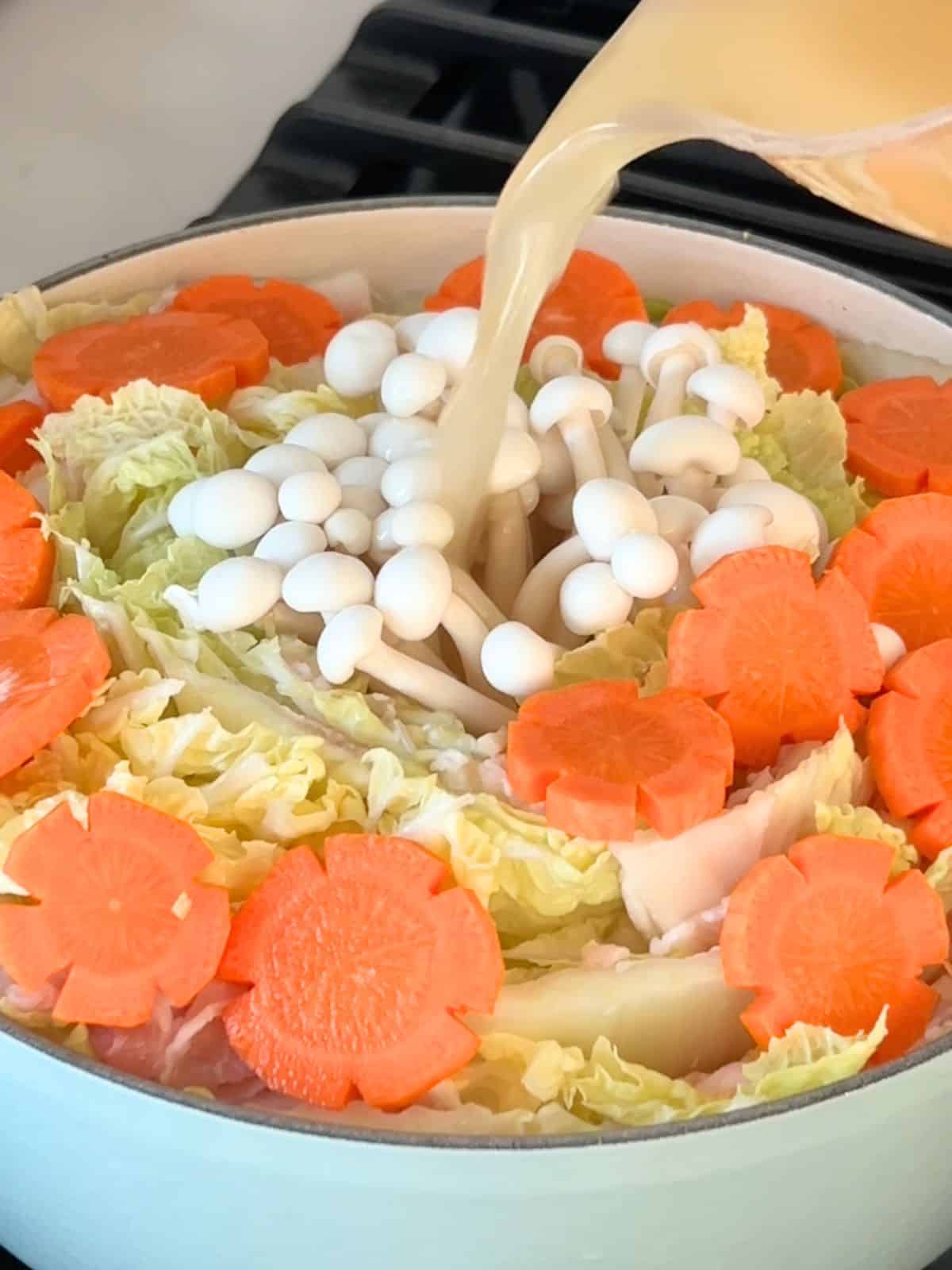
Step 8: Cover with a lid and cook on medium-high until boiling. Skim off any excess fat on top. Cover again and simmer for another 10-15 minutes or until the cabbage is tender. Optional: add back in the pork spareribs to warm back up. Enjoy as is, with some rice or fish sauce as a dipping sauce.
Hint: Pack the cabbage layers tightly in the pot to maintain the beautiful layered effect! This is where the “mille feuille” effect comes into play.
How to serve it
I like to make this when I have a crowd to feed! I serve it family style for about 4 people. Mille-feuille nabe is great on its own but it can be dipped in soy sauce or ponzu sauce. Serve with rice and other side dishes for a more filling meal!
Top Tips
- Clean the napa cabbage thoroughly between each leaf to remove any hidden dirt. The easiest way to do this is first cut the cabbage in quarters, keeping the root intact. Then, soak each quarter well in clean water.
- After making the pork broth, I recommend straining it through a cheese cloth if you have one on hand. This will get rid of any impurities, making the broth taste better!
- Another step to get a clean tasting broth is parboiling the pork spare ribs on their own for just about 10 minutes, draining that water, rinsing the ribs, and then boiling again with fresh water and the other ingredients (carrots, daikon radishes, and salt).
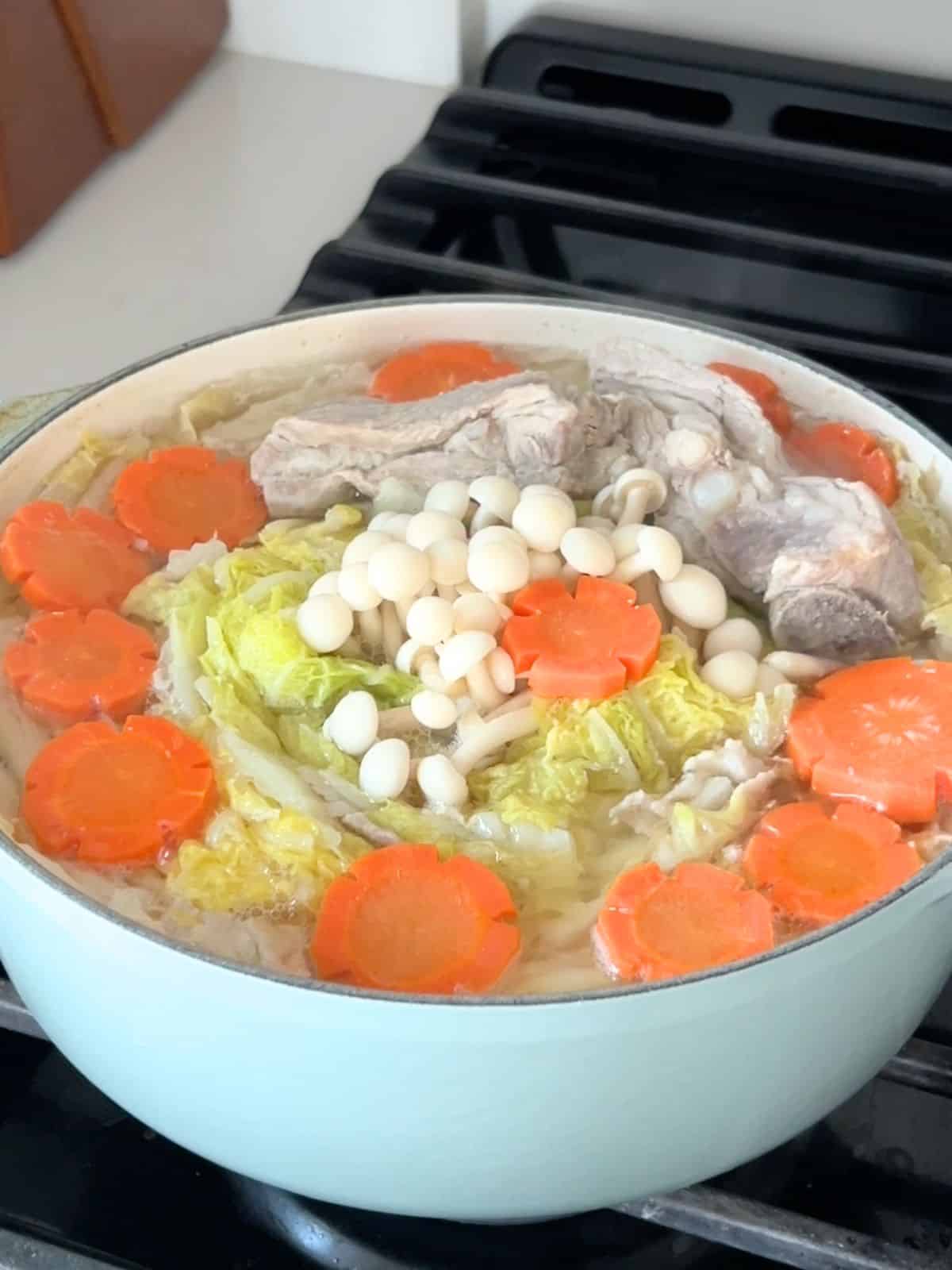
Substitutions & Variations
- Pork Belly: Replace pork belly with thinly sliced beef for a different but still delicious version!
- Vegetables: Add different mushroom varieties like enoki or shiitake, or incorporate other vegetables like baby bok choy in the center.
- Broth: For a traditional version, use dashi broth in place of the pork broth for a more authentic Mille-feuille nabe. You can also use chicken instead of pork for the broth, or your favorite store bought chicken broth.
Storage Suggestions
Store any leftover broth separately from the vegetables and meat in airtight containers in the refrigerator for up to 3 days. When reheating, gently warm the broth first, then add the solid ingredients to prevent overcooking. This Vietnamese hot pot is best enjoyed fresh, but leftovers can still be delicious when properly reheated.
FAQs
Nabe is the Japanese word for hot pot dishes that are cooked and served in a pot! While this recipe has Vietnamese-inspired flavors, it borrows the Japanese hot pot style of cooking and serving. The term "mille-feuille" refers to the beautiful layering technique used with the cabbage and pork belly, inspired by the classic French pastry mille feuille!
Napa cabbage pork layers should be tender but still hold its shape. The pork belly should be fully cooked and tender, usually after 10-15 minutes of simmering.
Parboiling the ribs helps remove impurities to create a cleaner broth! I would not skip this step.
More Vietnamese-style recipes to try
Vietnamese Mille-Feuille Nabe
Ingredients
- 2 ½ lbs napa cabbage quartered lengthwise
- 1 lb daikon radish
- 1 ¼ lbs pork spareribs
- 10 oz carrots divided into 3 oz and 7 oz
- 1 lb thinly sliced pork belly
- 2-3 teaspoon Red Boat Fish Sauce
- 1 teaspoon salt
- 7-8 cups water
- beech mushroom optional
Instructions
- To make the broth, begin by bringing a large pot of water to a boil. Add in the pork spareribs and parboil for 5-10 minutes. Drain and rinse under cold water.
- To the large pot, add 7 cups of water, the parboiled spareribs, daikon radish, and 7oz of carrots, quartered into 2-inch pieces. Add 1 teaspoon of salt, bring to a boil and reduce to a simmer and cover for 45 minutes or until pork is tender. Add more water as needed.
- Remove daikon radish and carrots and discard. Remove pork ribs and set aside. Strain broth through a cheesecloth to help remove any excess fat or other impurities. Add broth back into the pot and add Red Boat Fish Sauce, to taste. Remove from the pot and set aside.
- Wash your quartered napa cabbage, making sure to clean in between each layer. Layer the pork belly slices onto the napa cabbage by placing one slice between each of the leaves. Repeat with the remaining pork belly. Cut the smaller leaves towards the center of the napa cabbage and set aside.
- Cut the hard core of the napa cabbage off and discard. Cut the rest of the napa cabbage into slices that are about 2 inches long.
- Optional step: carve the remaining 3oz of carrots into a flower, by cutting 5 equidistant slivers, lengthwise, out of the carrot and then into thin slices. Alternatively, you can cut the carrot into thin slices without carving out the slivers.
- Begin packing a large pot (about 4.5QT) with the sliced layers of napa cabbage. Pack the cabbage tightly around the pot until you reach the center. Place the smaller napa cabbage leaves in the center, along with any mushrooms you want to add and the sliced carrot flowers. Cover with 2 cups of pork broth or enough broth and water until it is covered. If there are any excess napa cabbage layers, move to a larger pot or set aside for a second batch.
- Cover with a lid and cook on medium-high until boiling. Skim off any excess fat on top. Cover again and simmer for another 10-15 minutes or until the cabbage is tender. Optional: add back in the pork spareribs to warm back up. Enjoy as is, with some rice or dipped in Red Boat Fish Sauce.


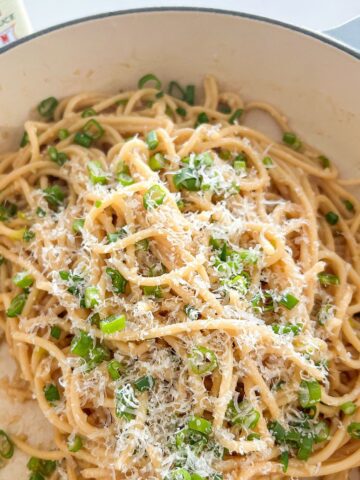
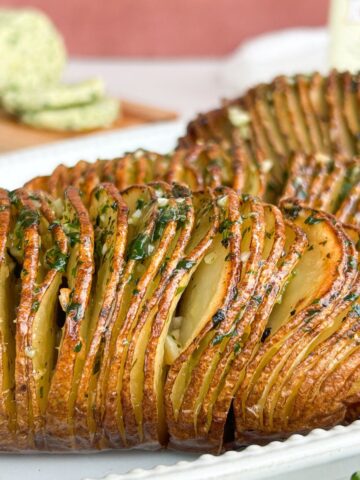

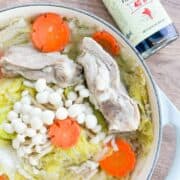

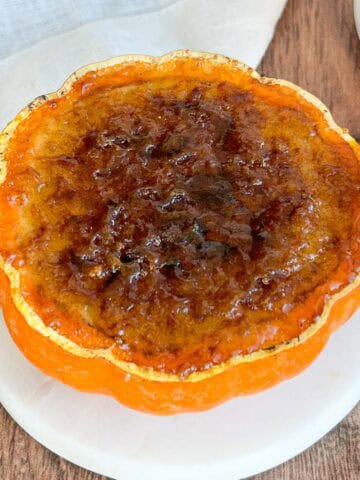
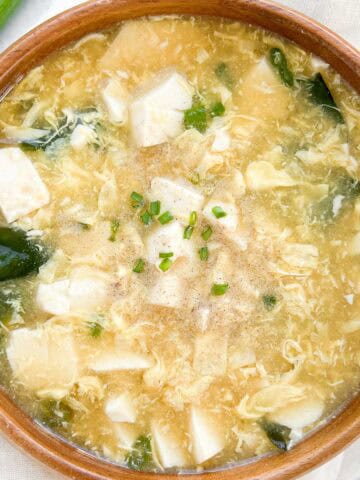

Leave a Reply